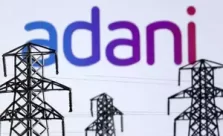To elevate and expand strategic technology partnership and defense industrial cooperation between the governments, businesses, and academic institutions of the United States of America and India, the first inaugural meeting under Critical and Emerging Technology (iCET) was hosted by the U.S.-India Business Council with U.S. Secretary of Commerce Gina Raimondo, U.S. National Security Advisor Jake Sullivan, and Indian National Security Advisor Ajit Doval, and other senior U.S. and Indian officials. The two nations underlined their commitment to resolving regulatory barriers and business and talent mobility in both countries are launching new bilateral initiatives and welcoming new cooperation between our governments, industry and academia.
To build a robust innovation ecosystem, the two nations are signing a new Implementation Arrangement for a Research Agency Partnership between the National Science Foundation and Indian science agencies to expand international collaboration in various areas. This includes artificial intelligence, quantum technologies, and advanced wireless. They are also establishing a joint Indo-U.S. Quantum Coordination Mechanism with participation from industry, academia, and government to facilitate research and industry collaboration. In addition, they are also promoting collaboration on High Performance Computing (HPC), including by working with Congress to lower barriers to U.S. exports to India of HPC technology and source code.
Semiconductor Supply Chains
Both India and USA are focusing on building a resilient semiconductor supply chain in-house. The nations are enhancing bilateral collaboration on resilient semiconductor supply chains; supporting the development of a semiconductor design, manufacturing, and fabrication ecosystem in India; and leveraging complementary strengths, both countries intend to promote the development of a skilled workforce that will support global semiconductor supply chains and encourage the development of joint ventures and technology partnerships on mature technology nodes and packaging in India.
A task force will be formed between the U.S. Semiconductor Industry Association (SIA) in partnership with the India Electronics Semiconductor Association (IESA) with participation from the Government of India Semiconductor Mission to develop a “readiness assessment” to identify near-term industry opportunities and facilitate the longer-term strategic development of complementary semiconductor ecosystems. This task force will make recommendations to the Department of Commerce and the India Semiconductor Mission on opportunities and challenges to overcome in order to further strengthen India’s role within the global semiconductor value chain, and will also provide input to the U.S.-India Commercial Dialogue. The task force will also identify and facilitate workforce development, R&D, advanced packaging, and exchange opportunities to benefit both countries.
The two nations are developing a new bilateral Defense Industrial Cooperation Roadmap to accelerate technological cooperation between both countries for joint development and production, with an initial focus on exploring projects related to jet engines, munition-related technologies, and other systems. Noting that the United States has received an application from General Electric to jointly produce jet engines that could power aircraft operated and produced indigenously by India, the US has committed to an expeditious review of this application.
They are also enhancing long-term research and development cooperation, with a focus on identifying maritime security and intelligence surveillance reconnaissance (ISR) operational use cases. Moreover, they are launching a new “Innovation Bridge” that will connect U.S. and Indian defense startups.
Next Generation Telecommunications
The two nations are launching a public-private dialogue on telecommunications and regulations. They are also advancing cooperation on research and development in 5G and 6G, facilitating deployment and adoption of Open RAN in India, and fostering global economies of scale within the sector.
Space
India and US will strengthen cooperation on human spaceflight, including establishing exchanges that will include advanced training for an Indian Space Research Organization (ISRO)/Department of Space astronaut at NASA Johnson Space Center. They will identify innovative approaches for the commercial sectors of the two countries to collaborate, especially with respect to activities related to NASA’s Commercial Lunar Payload Services (CLPS) project. Within the next year, NASA, with ISRO, will convene U.S. CLPS companies and Indian aerospace companies to advance this initiative.
A new STEM talent exchanges has been imitated by expanding the Professional Engineer and Scientist Exchange Program (PESEP) to include space science, Earth science, and human spaceflight and extending a standing invitation to ISRO to participate in NASA’s biannual International Program Management Course
US President Joe Biden and Indian Prime Minister Narendra Modi announced the U.S.-India initiative on Critical and Emerging Technology (iCET) in May 2022. Following the inaugural meeting in USA, the two nations will have the next iCET meeting in New Delhi later in 2023. The National Security Councils of both countries will coordinate with their respective ministries, departments and agencies to work with their counterparts to advance cooperation, and to engage with stakeholders to deliver on ambitious objectives ahead of the next meeting.









Leave a Reply
You must be logged in to post a comment.